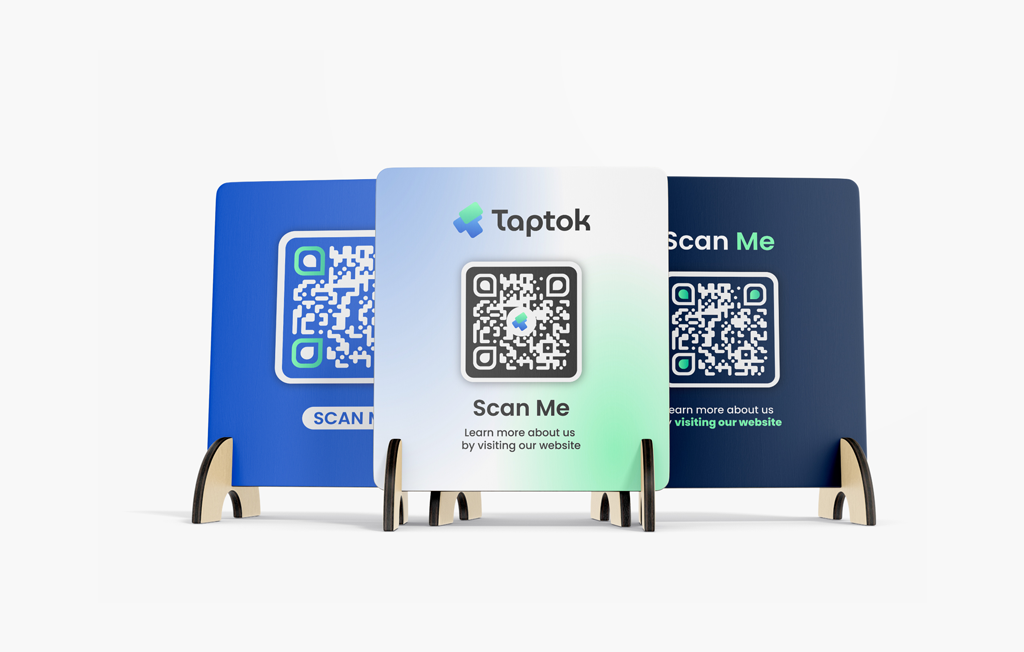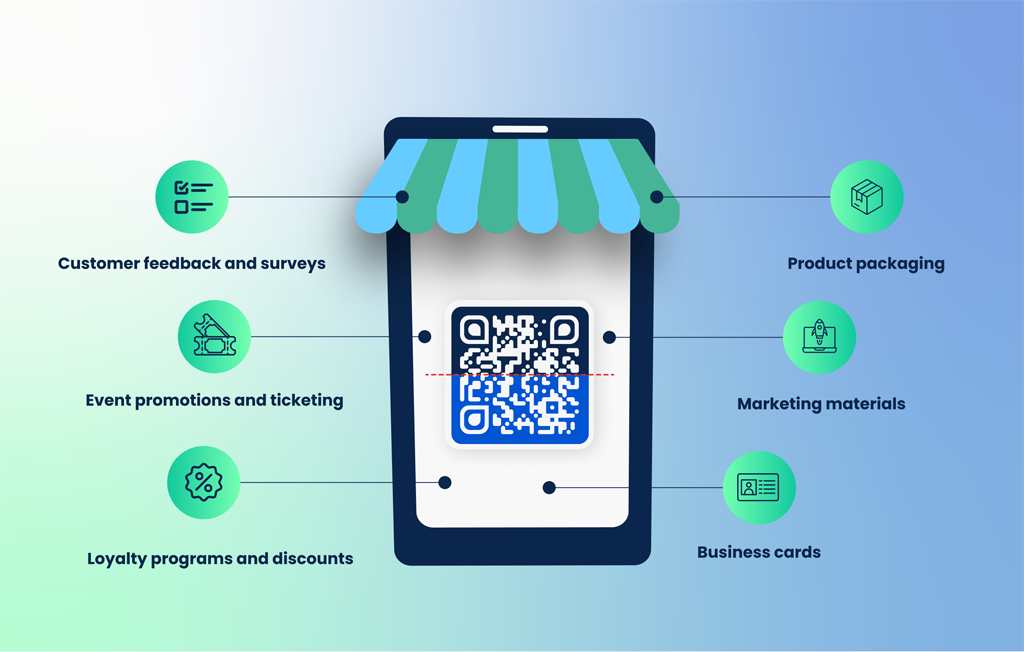How to use QR Codes in your business
Lead generation has become more essential for business growth and success in the modern digital age. It's important to gather and nurture leads if your objective is to turn prospective customers into loyal customers. QR codes are one efficient innovation that has significantly increased in popularity in recent years.
Understanding QR Codes

What are QR codes?
QR codes are two-dimensional barcodes featuring a square matrix design that stores information. Denso Wave, a Japanese automotive firm, developed them in 1994 to track automobiles during manufacturing operations. Since then, QR codes have grown in popularity and are now used in a variety of industries for different purposes.
QR codes are visually striking and consist of black square modules arranged on a white background. They can store various types of data, such as text, URLs, contact information, and more. This versatility makes QR codes a powerful tool for businesses to engage customers and drive lead generation efforts.
How do QR codes work?
QR codes operate by encoding data that can be scanned fast and simply by smartphones or QR code scanning apps. The encoded information is decrypted and an action or specific content is presented when a user scans a QR code using their device's camera or a scanning app.
The process of scanning is simple; it takes only a smartphone with a camera or a QR code scanning application. The scanning app reads the QR code once it is visible in the camera's viewfinder and decodes the data it contains. Depending on the QR code's format and intended usage, the user may be directed to a website, asked to download an app, or given contact information or other relevant information.
Types of QR codes
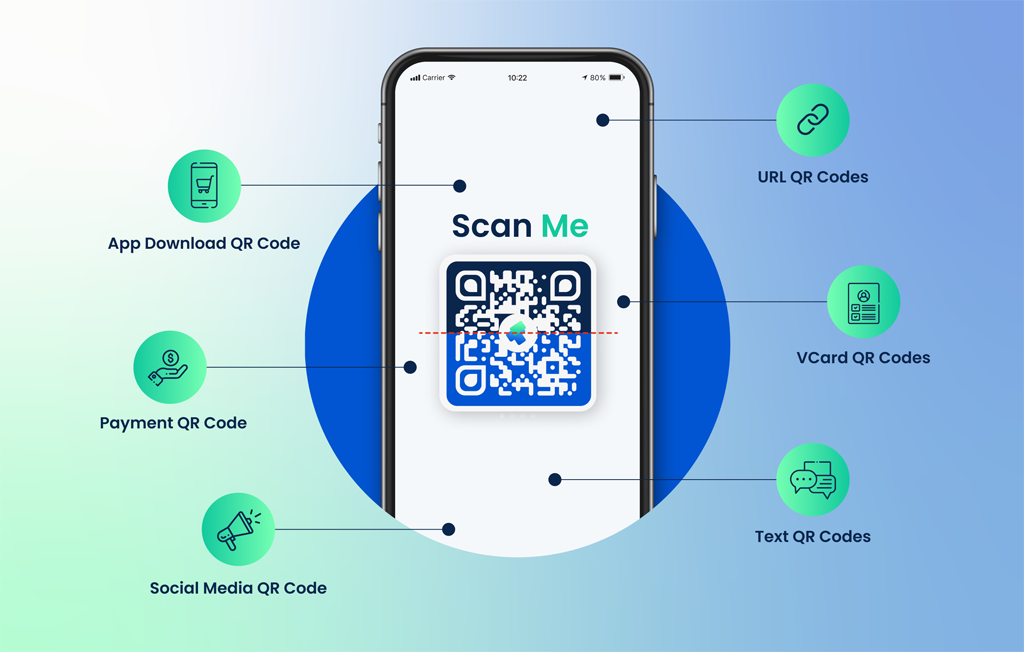
URL QR codes: They direct users to a specific website or landing page. They are often used in marketing campaigns, enabling companies to distribute
promotional offers, product details, or lead generation forms. URL QR codes are the best way to capture leads and direct traffic to a particular internet location.
VCard QR codes: These codes can be scanned to rapidly import encoded contact information into the user's device, including name, phone number, email address, and more. To share contacts quickly and accurately during networking events, conferences, or business meetings.
Text QR codes: Text QR codes contain simple text messages or instructions. They are used to communicate brief messages, special offers, or extra information. Text QR codes are easily scannable and can be used to engage customers and offer concise messages in print materials or digital platforms.
App download QR codes: They make it easier to download mobile applications. Users are directed to app marketplaces or specialized download sites by scanning these codes, avoiding the need for tedious searches. They are helpful for businesses wishing to market their mobile apps and increase downloads.
Payment QR codes: Payment QR codes facilitate effortless transactions by connecting to payment platforms or digital wallets. Customers can rapidly initiate payments for products or services by scanning these codes. Payment QR codes have become popular in retail, hotel, and e-commerce industries as they facilitate and speed up checkout.
Social media QR codes: Social media QR codes connect users to specific social media profiles or pages. Users can instantly follow businesses, like postings, and share content on social media platforms by scanning these codes. Social media QR codes can assist in boosting company engagement, growing online presence, and encouraging user-generated content.
Benefits of Using QR Codes in Your Business
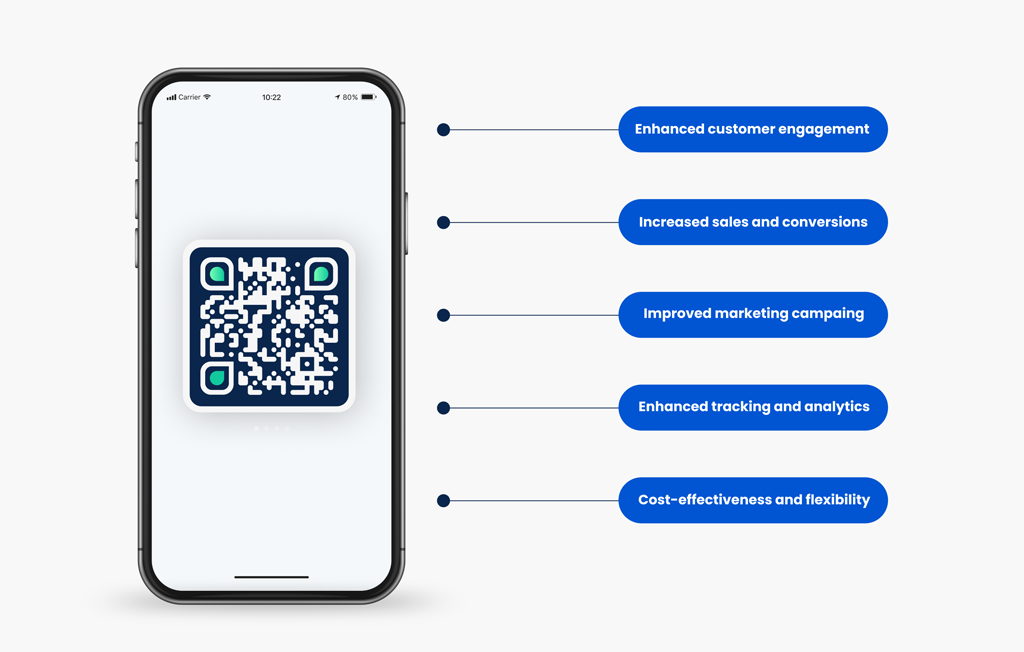
Enhanced customer engagement
QR codes provide a dynamic and interactive way to engage customers. Customers can access exclusive material, enter contests, and unlock special offers by scanning QR codes. This interactive experience strengthens the bond between the customer and the brand, increasing engagement and brand loyalty. QR codes link real and online interactions, enabling businesses to create memorable experiences that leave a lasting impression on customers.
Streamlined information sharing
QR codes make it easier to share information with clients. Businesses can embed vital details within a QR code rather than depending on traditional means such as handing out brochures or printing lengthy URLs. Customers can rapidly scan the code for product information, pricing, or user manuals. This fast access to information reduces the need for manual data entry or searching, saving both the business and the client time and effort.
Increased sales and conversions
QR codes have been proven to be powerful tools for improving sales and conversions. Businesses can provide direct links to product sites, special promotions, or unique discounts by inserting QR codes into marketing materials. This seamless integration of the physical and digital worlds reduces friction in the purchasing process, enabling customers to make quick purchases. QR codes' convenience and immediacy can lead to improved conversion rates and, as a result, increased sales for businesses.
Improved marketing campaigns
QR codes have the potential to improve the effectiveness of marketing campaigns significantly. Businesses may acquire leads and track the progress of their campaigns by carefully inserting QR codes in advertisements, posters, or packaging. Companies can use QR codes to track the levels of engagement, conversion rates, and customer demographics related to specific initiatives. Businesses may use this data-driven strategy to enhance their marketing efforts, make better choices, and increase overall campaign performance.
Enhanced tracking and analytics
QR codes offer useful tracking and analytics features. Businesses can collect data on the number of scans, scan locations, and scan times. This data assists organizations in better understanding client behavior, measuring the success of QR code initiatives, and identifying areas for improvement. Tracking QR code scans also offers information about client preferences and enables targeted follow-ups, resulting in more effective lead nurturing and improved conversion rates.
Cost-effectiveness and flexibility
QR codes are a low-cost solution for businesses of all sizes. QR codes are relatively affordable to create and can be printed on a variety of materials such as packaging, flyers, business cards, or posters. QR codes are simple to update or modify without incurring major costs, allowing firms to alter their marketing strategy in real time. QR codes are a versatile tool that can be implemented into a wide range of marketing campaigns, making them accessible and helpful to firms in a variety of industries.
Ways to Implement QR Codes in Your Business
Product packaging
Integrating QR codes into product packaging can give numerous advantages. Businesses can provide clients rapid access to product information, user manuals, or assembly instructions by including a QR code on the packaging. Furthermore, QR codes can display customer feedback, highlight product benefits through videos, or provide unique discounts for future purchases. QR codes on product packaging improve the customer experience and allow for upselling, cross-selling, and repeat business.
Marketing materials
QR codes can improve marketing materials such as brochures, flyers, posters, and billboards. Businesses may direct potential customers to specific landing pages, promotional offers, or lead capture forms via a QR code in these materials. Companies can use this approach to track the performance of their marketing activities, measure customer engagement, and increase conversions. QR codes on marketing materials are a fascinating and effective method to connect with customers and create leads.
Business cards
Business cards have long been used to facilitate networking and professional relationships. Individuals can exchange contact information more efficiently by embedding QR codes into business cards. When the QR code is scanned, the encoded contact information is quickly imported into the recipient's device, eliminating the need for manual entry. Furthermore, QR codes on business cards
can direct customers to personal websites, portfolios, or social media profiles, allowing them to learn more about the individual and their services.
Loyalty programs and discounts
QR codes have the potential to reinvent loyalty programs and discount campaigns. Businesses can offer smooth redemption of rewards or discounts at the moment of sale by embedding QR codes into loyalty cards or mobile apps. Customers can access their loyalty accounts, track points, and get deals by scanning the QR code. This improves the consumer experience and allows businesses to collect vital data on client preferences and purchase habits, allowing customized marketing and targeted incentives.
Event promotions and ticketing
QR codes are a quick and secure way for event organizers to manage marketing and ticketing. QR codes on posters, social media posts, or email campaigns can be used to view event details, purchase tickets, or RSVP with a single scan. QR codes can also be used as electronic tickets, removing the need for paper tickets and allowing for easier access into the event. Event organizers can also measure attendance, track ticket sales, and collect participant data for future marketing efforts.
Customer feedback and surveys
QR codes are an effective way to collect client feedback and perform surveys. Businesses can prompt customers to submit feedback on their experiences by including QR codes on receipts, packaging, or in-store displays. Customers may submit their comments by scanning the QR code, which can take them to online surveys, feedback forms, or review platforms. This valuable input can assist businesses in identifying areas for improvement, improving consumer satisfaction, and refining their products or services.
Best Practices for Creating and Using QR Codes
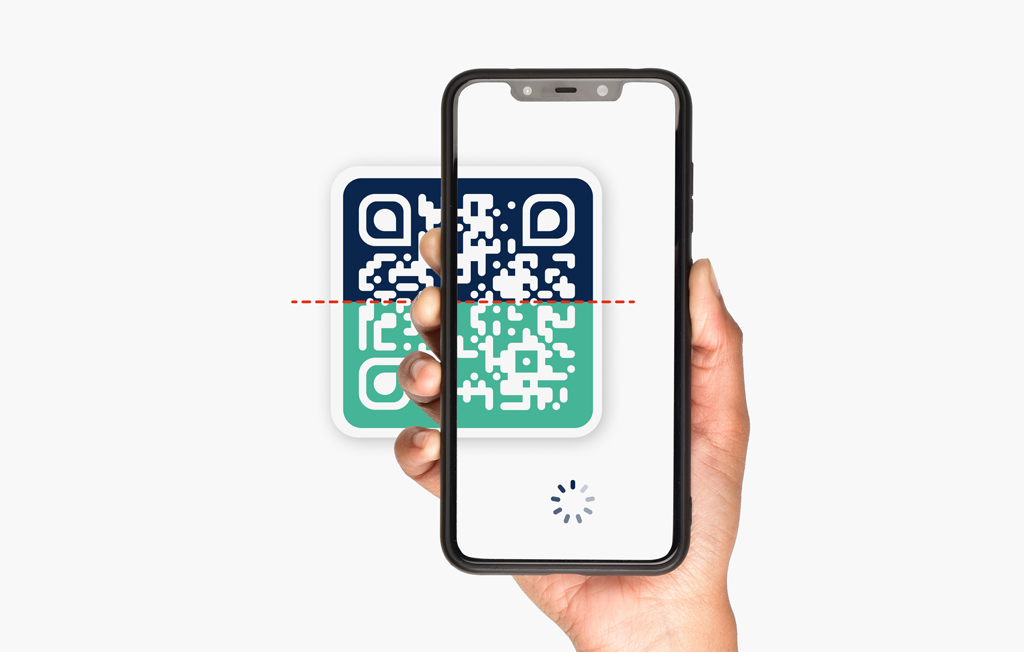
Selecting a reliable QR code generator
When developing QR codes for your company, using a trustworthy QR code generator is critical. Look for a QR code generator with adjustable choices, analytics tracking, and the ability to generate high-resolution QR codes.
Ensure that your selected generator is credible and produces secure, error-free codes.
Customizing QR codes to align with your brand
Make your QR codes visually appealing and consistent with your brand's image. Many QR code generators enable customization, such as adding colors, logos, or background images. You can make your QR codes more recognizable and memorable by including brand characteristics. However, remember that the primary purpose is easy scannability, so keep the design simple.
Testing and optimizing QR code placement
Before launching your QR code campaign, evaluating and optimizing QR code placement is critical. Make sure the codes are in easily accessible places where customers may scan them with their cell phones. Consider elements such as lighting, distance, and angle for best scanning. Increase engagement and improve the user experience by testing and tweaking QR code positioning.
Ensuring QR code accessibility and compatibility
Ensure your QR codes are accessible and compatible with various devices and scanning applications to reach a bigger audience. Avoid utilizing small, difficult-to-scan QR codes, and make sure the encoded material is mobile-friendly. You can provide a consistent user experience by prioritizing accessibility and compatibility.
Tracking and analyzing QR code performance
It is critical to track and analyze the performance of your QR codes to understand their effectiveness and make data-driven decisions. Use the analytics tools supplied by your QR code generator to track critical metrics like scan rates, geographic data, and scan times. This data can assist you in determining the performance of your QR code campaigns, identifying improvement areas, and tailoring your marketing efforts accordingly.
Updating and refreshing QR codes periodically
QR codes should not be seen as permanent marketing assets. To keep your QR codes relevant and exciting, you should update and refresh them regularly. Update the encoded material with new promotions, product information, or
other pertinent information. Enhancing your QR codes maintains accuracy and provides an opportunity to attract and retain clients' attention over time.
Conclusion
QR codes have evolved into an effective tool for organizations looking to boost consumer engagement, facilitate information sharing, increase sales, and improve marketing campaigns. Understanding the fundamentals of QR codes, such as their purpose and functionality, enables businesses to leverage their potential success. Companies can interact with their target audience and promote lead generation efforts by including QR codes in various ways, such as product packaging, marketing materials, business cards, loyalty programs, event promotions, and customer feedback initiatives.
Time to experience the future today! Click here - https://app.tt.social/tools/qr-generator-ai to try our new AI QR Generator and create a QR code that aligns perfectly with your brand. Elevate your business and join the revolution in QR technology.

